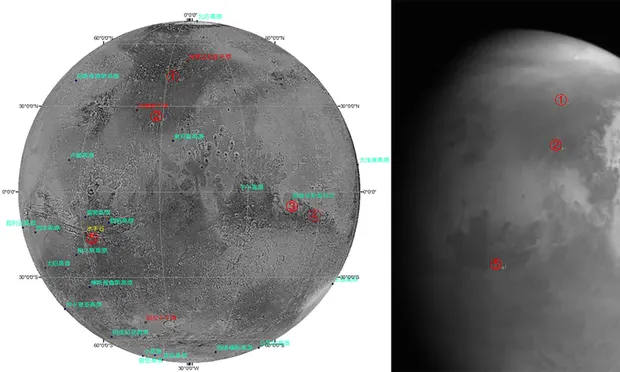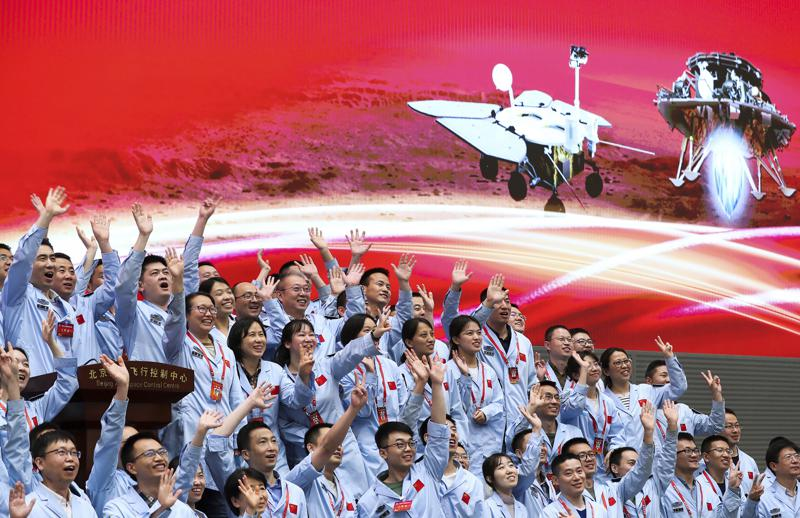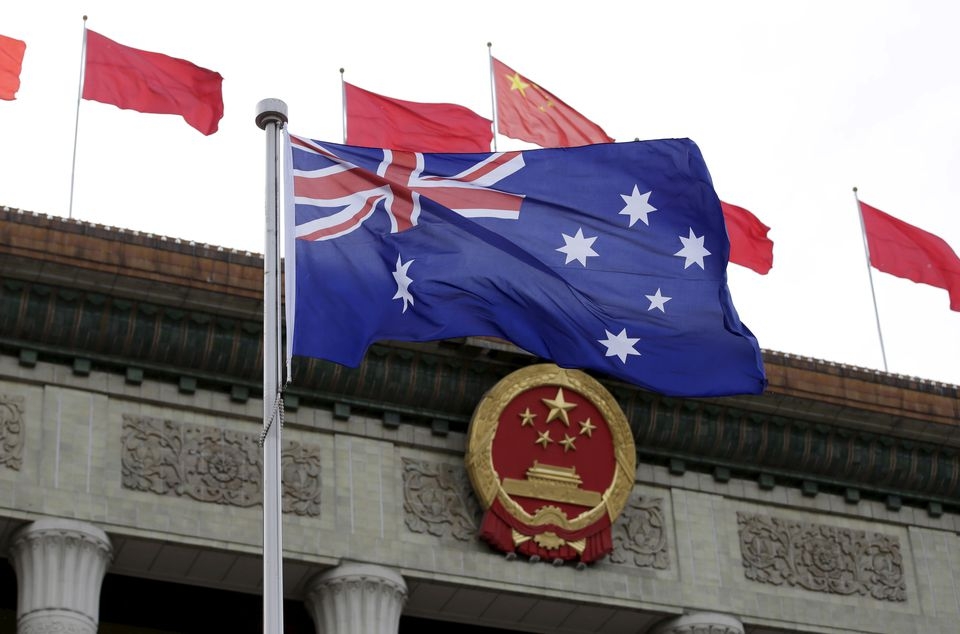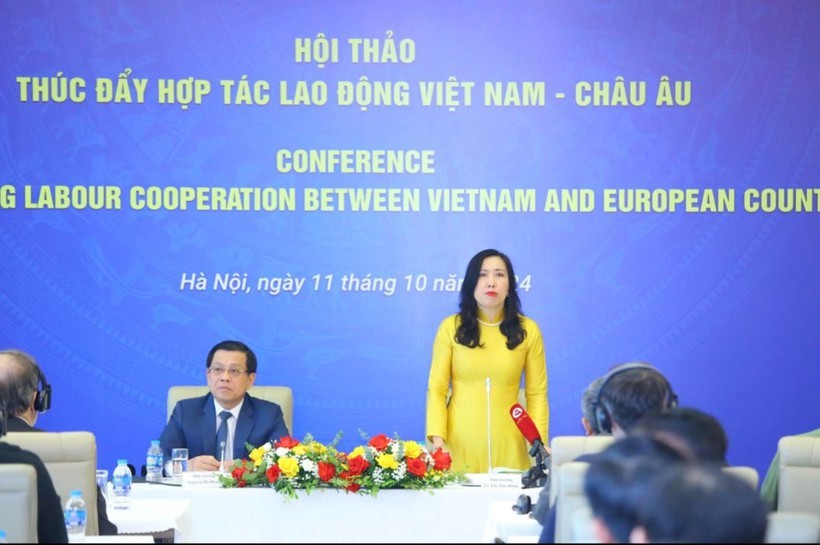China completes Mars spacecraft landing
| China supports Vietnam’s policy of pursuing socialism | |
| China reaches peak Covid-19 prevention with Everest ‘separation line’ | |
| China, Indonesia hold joint naval exercises near Jakarta |
 |
| An image of Mars taken by China’s Tianwen-1 unmanned probe in March. Photo: CNSA/Reuters |
Tianwen-1, consisting of an orbiter, a lander and a rover, was launched from the Wenchang Spacecraft Launch Site on the coast of southern China's island province of Hainan on July 23, 2020, state news agency Xinhua reported.
It was the first step in China's planetary exploration of the solar system, with the aim of completing orbiting, landing and roving on the red planet in one mission.
The name Tianwen, meaning Questions to Heaven, comes from a poem written by the ancient Chinese poet Qu Yuan (about 340-278 BC). China's first Mars rover is named Zhurong after the god of fire in ancient Chinese mythology, which echoes with the Chinese name of the red planet: Huoxing (the planet of fire).
The spacecraft entered the Mars orbit in February after a journey of nearly seven months through space, and spent more than two months surveying potential landing sites.
In the early hours of May 15, the spacecraft began to descend from its parking orbit, and the entry capsule enclosing the lander and rover separated from the orbiter at about 4 a.m.
After flying for approximately three hours, the entry capsule hurtled toward the red planet and entered the Mars atmosphere at an altitude of 125 km, initiating the riskiest phase of the whole mission.
 |
| China National Space Administration (CNSA) photo from its Mars probe, Tianwen-1, taken in February. Photo: Xinhua/REX/Shutterstock |
First, the specially designed aerodynamic shape of the entry capsule decelerated with the friction of the Martian atmosphere. When the velocity of the spacecraft was lowered from 4.8 km per second to about 460 meters per second, a huge parachute covering an area of about 200 square meters was unfurled to continue reducing the velocity to less than 100 meters per second.
The parachute and the outer shield of the spacecraft were then jettisoned, exposing the lander and rover, and the retrorocket on the lander was fired to further slow the speed of the craft to almost zero.
At about 100 meters above the Martian surface, the craft hovered to identify obstacles and measured the slopes of the surface. Avoiding the obstacles, it selected a relatively flat area and descended slowly, touching down safely with its four buffer legs.
The craft's plummet through the Martian atmosphere, lasting about nine minutes, was extremely complicated with no ground control, and had to be performed by the spacecraft autonomously, said Geng Yan, an official at the Lunar Exploration and Space Program Center of the CNSA.
"Each step had only one chance, and the actions were closely linked. If there had been any flaw, the landing would have failed," said Geng.
 |
| In this photo released by Xinhua News Agency, members at the Beijing Aerospace Control Center celebrate after China's Tianwen-1 probe successfully landed on Mars, at the center in Beijing, Saturday, May 15, 2021. Photo: Xinhua via AP) |
The U.S. has had nine successful landings on Mars since 1976. The Soviet Union landed on the planet in 1971, but the mission failed after the craft stopped transmitting information soon after touchdown.
A rover and a tiny helicopter from the American landing in February are currently exploring Mars. NASA expects the rover to collect its first sample in July for return to Earth in a decade, according to the Associated Press (AP).
Chinese President Xi Jinping, in a congratulatory letter to the mission team, called the landing “an important step in our country’s interplanetary exploration journey, realizing the leap from Earth-moon to the planetary system and leaving the mark of the Chinese on Mars for the first time. ... The motherland and people will always remember your outstanding feats!”
NASA Associate Administrator Thomas Zurbuchen tweeted his congratulations, saying, “Together with the global science community, I look forward to the important contributions this mission will make to humanity’s understanding of the Red Planet”./.
 | China suspends economic dialogue with Australia China cut off a channel for diplomatic and trade talks with Australia on May 6 in a largely symbolic act of fury, following clashes over ... |
 | China said US spy planes flew over Bien Dong Sea throughout April In its monthly summary, the Beijing-based South China Sea Strategic Situation Probing Initiative (SCSPI) said at least 65 US military aircraft operated in the waters. |
 | China calls for 'basic etiquette' after Philippine outburst China urged the Philippines on May 4 to observe "basic etiquette" and eschew megaphone diplomacy after the southeast Asian nation's foreign minister used an expletive-laced ... |
Most read
Recommended
 World
World
2024 US Presidential Election: Voters Focus on Economy, Social Security, and Housing
 World
World
Promoting Vietnam’s Rich Culture, Economic Growth in the US
 World
World
Modi's GatiShakti is India’s gift to the third world for transforming infrastructural planning
 World
World
European and Vietnamese Universities Expand Scientific Cooperation
Popular article
 World
World
Abhidhamma Divas Honours Teachings of Lord Buddha, Celebrates Revival of Pali Language
 World
World
Birch: The Miracle Tree of Russia
 World
World
With India in leadership role in Quad, the ‘string’ stitching China’s ‘pearls’ now doomed to snap
 World
World












